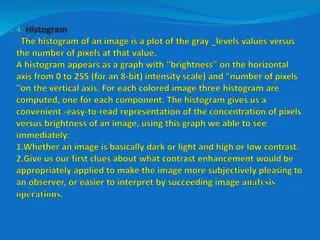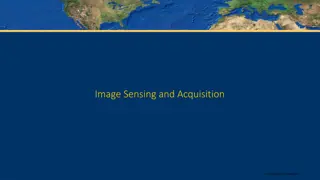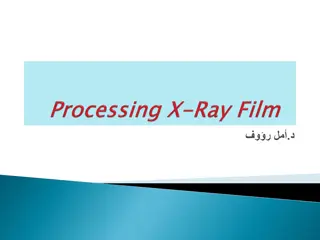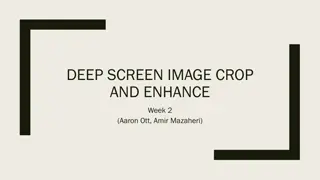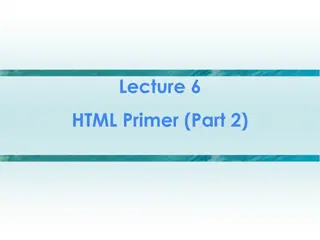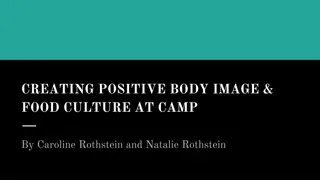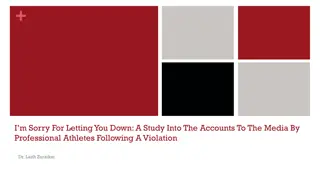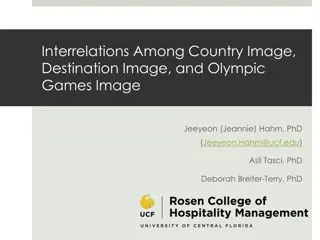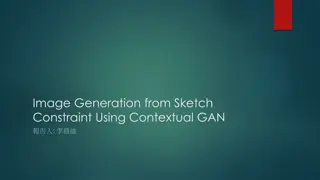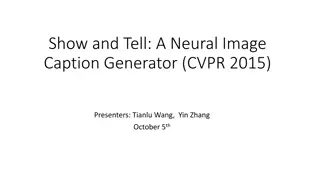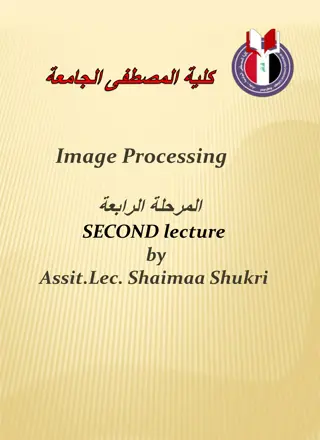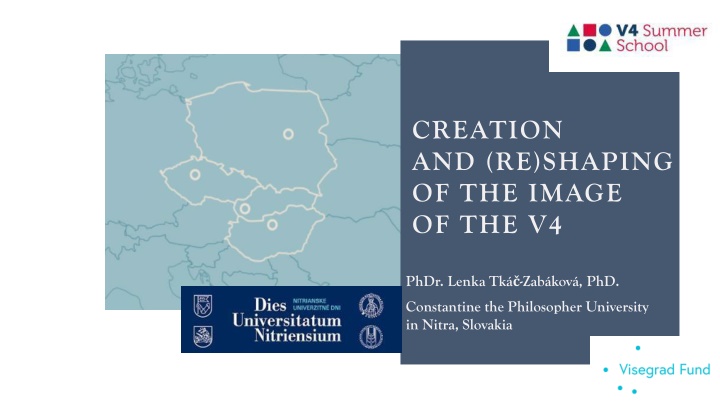
Evolution of the V4 Image: Cooperation, Perception, and Cultural Unity
Explore the creation and transformation of the Visegrad Group's image, reflecting on subregional cooperation, self-image, historical roots, and common interests. Discover the interconnections and shared heritage shaping their identity in Central Europe.
Download Presentation

Please find below an Image/Link to download the presentation.
The content on the website is provided AS IS for your information and personal use only. It may not be sold, licensed, or shared on other websites without obtaining consent from the author. If you encounter any issues during the download, it is possible that the publisher has removed the file from their server.
You are allowed to download the files provided on this website for personal or commercial use, subject to the condition that they are used lawfully. All files are the property of their respective owners.
The content on the website is provided AS IS for your information and personal use only. It may not be sold, licensed, or shared on other websites without obtaining consent from the author.
E N D
Presentation Transcript
CREATION AND (RE)SHAPING OF THE IMAGE OF THE V4 PhDr. Lenka Tk -Zab kov , PhD. Constantine the Philosopher University in Nitra, Slovakia
VISEGRAD GROUP Subregional cooperation: ... a process of regularised, significant political and economic interaction among a group of neighbouring states. This interaction takes place between national governments, local authorities, private business and civil society actors across a wide range of issues (Dwan, 2000, p. 81). EST. 1991 MEMBERS: Czechia, Hungary, Poland and Slovakia AIM: strengthening the stability and prosperity in the Central European region
SELF- (AUTO-) AND HETERO- IMAGE seeing ourselves (selfimage or autoimage) vs. seeing others or how others see us (heteroimage) = stereotypes, prejudices, myths or clich s preconceived opinion that is not based on reason or actual experience, synonyms: preconception, prejudgement, preconcieved idea etc.
THE IMAGE OF THE V4 How do others see us? What do they think of the countries of the V4? How do we see ourselves? What is the image of the V4 based on? How did the image evolve?
CREATION AND (RE)SHAPING OF THE IMAGE OF THE V4 What are the interconnections that naturally have been leading to their common interests in spheres of international politics, economy, culture and other? Where did the idea of such mutual cooperation and integration within the Central European region come from? Why are the countries of the V4 so close one to another?
HISTORICAL, GEOGRAPHICAL AND CULTURAL INTROSPECTION as a common ground of the V4 I. Spaciality II. Common historical background III. Cultural assets
1. Spaciality STRATEGIC LOCATION IN THE ABSOLUTE HEART OF EUROPE
II. Historicity German Conquests in World War Two (1942) MAP FROM US HOLOCAUST MEMORIAL MUSEUM
Spheres of influece 2ND HALF OF THE 20TH CENTURY
HISTORICAL INTROSPECTION BY ROBERT TH. KAESTNER 1355 the reign of Charles IV 1867 Austro-Hungarian Compromise 1458/1490 Constitution of the Hungarian Empire 1918 Dissolution of Austria-Hungary 1919/1920 Treaty of Paris 1520 reforming activities of M. Luther 1933 Hitler's rise to power 1526 Battle of Moh cs 1938 Munich Agreement 1620/1621 The Battle of White Mountain 1945 Yalta conference 1569 1795 Polish Lithuanian Commonwealth 1956 Hungarian Uprising 1968 Prague Spring 1745 Prussia takes Silesia 1979/1980 The first pope's pilgrimage to Poland and the establishment of Solidarity 1772, 1793, 1795 partitons of Poland 1848/1849 revolution in France and Central Europe 1989/1990 the fall of the Iron Curtain 1999 EU entry discussions 1866 Battle of K niggr tz
HISTORICAL INTROSPECTION BY ROBERT TH. KAESTNER ... 1355 the reign of Charles IV 1918 Dissolution of Austria-Hungary 1458/1490 Constitution of the Hungarian Empire 1919/1920 Treaty of Paris 1933 Hitler's rise to power 1520 reforming activities of M. Luther 1938 Munich Agreement 1526 Battle of Moh cs 1945 Yalta conference 1620/1621 The Battle of White Mountain 1956 Hungarian Uprising 1569 1795 Polish Lithuanian Commonwealth 1968 Prague Spring 1979/1980 The first pope's pilgrimage to Poland and the establishment of Solidarity 1745 Prussia takes Silesia 1772, 1793, 1795 partitons of Poland 1989/1990 the fall of the Iron Curtain formation of Visegrad group 1848/1849 revolution in France and Central Europe 1999 EU entry discussions 1866 Battle of K niggr tz 1867 Austro-Hungarian Compromise
OLDER GEOPOLITICAL CONCEPTS Pangermanism Pan-Slavism Austroslavism federal organization etc. They formed a general opinion, that large and self-sufficient economic policy can be pursued only by larger economic units.
FRANTIEK PALACK (1798 1876) ON CENTRAL EUROPE Tu p eb vaj n rodov mnoz , p vodem, jazykem, d jinami a mravem znamenit rozd ln , Slovan , Vala i, Ma a i a N mci, o ec ch, Turc ch a kipeta ch ani nemluv c, z nich to dn s m o sob nen dosti mocen, aby p emocn mu sousedu sv mu na v chod odporovati mohl s prosp chem po v e budouc asy; to mohou jen tehd , kdy je svazek zk a pevn bude spojovati v ecky v jedno. Prav ivotn la tohoto pot ebn ho svazku n rod jest Dunaj; st edn jeho moc nesm se od eky t to nikdy daleko uchylovati, m -li skute n v bec platn b ti a z stati. Zajist , kdyby st tu Rakousk ho nebylo ji od d vn , musili bychom v interesu Europy, ba humanity same p i initi se co nejd ve, aby se utvo il. Letter to Frankfurt, 11th April 1848 In N rodn noviny (National Newspaper), Prague: Nos.
FRANTIEK PALACK (1798 1876) ON CENTRAL EUROPE Pr vo n rod jest skute n pr vo p rody; dn n rod na zemi nem pr va, dati, aby k jeho prosp chu soused jeho sebe s m ob toval, dn nen povinen, pro dobr souseda sv ho sebe s m zap ti neb ob tovati. P roda nezn dn ch ani panuj c ch ani slu ebn ch n rod . M -li rozli n ch n rod v jeden a trvanliv , nesm dn n rod m ti p iny, ob vati se, e t mto spojen m p ijde o n kter z nejdra ch statk sv ch, naopak, ka d mus m ti jistou nad ji, e v st edn moci nalezne ochranu i z titu p ed mo n mi p echvaty soused p es ru rovnosti; potom se tak ka d p i in , opat iti st edn tuto moc silou takovou, aby dot enou ochranu mohla s prosp chem vykon vati (Ibid.). svazek, politick kter celek, spojuje b ti v ce pevn
UDOVT TR (1815 - 1856) The Slavic Federation with a republican establishment, but it would exclude Russia and all tribes from this federal union: Kingdom of Poland, Kingdom of Serbia, Bulgaria, Bosnia, Herzegovina, Albania, Montenegro. Slavic federation would include Bohemia, Moravia, Silesia, Slovakia, Galicia, Slavic tribes in Carinthia, Styria, Croatia, Slavonia, Dalmatia and Serbian Vojvodina.
ZYGMUNT KRASISKI (1812 - 1859) transformation of Austria into a Slavic state, which would include Poland, the Czech Republic, Hungary and all the Austrian provinces, where the Slavs live. L SZL TELEKI (1811 - 1861) a supporter of the federalization of the monarchy on ethnic principle
TOM GARRIGUE MASARYK (1850 - 1937) reform of the monarchy: he suggested the change from dualistic to "trialistic" - he thus demanded the equivalence of the German, Hungarian and Slavic populations (Tr vn ek, J., 2009, p. 260). zone of small nations , which should be somewhat unified maybe under pan-slavic vision.
MILAN HODA (1878 - 1944) Central European integration = process, but it must take place in stages: in the first phase, states with certain common interests should be united, e.g. political integration should be preceded by economic integration. Nem eme st za stredoeur pskym z objekt vnych a politick ch d vodov. Dnes u Nemecko nie je iadna stredn Eur pa ani zemepisne, ani civiliza ne. Nemecko je s as ou z padnej Eur py. Ale to neznamen , e by sme chceli alebo mohli Nemecko vylu ova zo spolupr ce so strednou Eur pou. Naopak, stredn Eur pa, organizovan tak, ako si ju predstavujeme, bude m c pokojnej ie, bezpe nej ie a trvalej ie ne stredoeur pske n rody a t ty jednotlivo upravi svoj spolo n vz ah k Nemecku a nemectvu v bec. Jednoducho preto, e v strednej Eur pe aj s Nemeckom by v etky nie nemeck vazalmi (Hod a, M., 1997, s. 48). rie en m na ele s Nemeckom n rody boli nie spojencami, ale
J. OLOUGHLIN GEOPOLITICAL VISIONS OF CENTRAL EUROPE (1997) Mittleeuropa - the zone to the east of the Second Reich which O Laughlin calls to be not a border between two states but two worlds , Milan Kundera s kidnapped Occident - Central Europe politically belonged to the East, historically, it had always been part of the West, periphery of the West , Crush zone / Shutterbelt , return to the capitalist West, Third Europe neither East, nor West, geopolitical black hole and NATO expansion , chaotic concepts how to distinct Central Europe from the East one? - self and othering concept. 1. 2. 3. 4. 5. 6. 7.
Great Schism MAP FROM ATLAS OF THE HISTORICAL GEOGRAPHY OF THE HOLY LAND
CULTURE OF CENTRAL EUROPE BY PETER JORDAN German Jewish Slavic Romanesque Hungarian cultures (Jakabov Len o, 2010, p. 29).
Spheres of influece 2ND HALF OF THE 20TH CENTURY
ON CENTRAL EUROPE Zvl tn m sto na etnick map Evropy zauj mali id , jejich diaspora byla nejstar a nejv znamn j na kontinente v bec; jin men inov skupiny... zanechaly jen slabou kou historickou stopu. ... id byli rozpt lenou a prom nlivou diasporou s pevn mi vnit n mi pouty v ry a spole enstv m osud , z rove v ak nem n pevn vt lenou do ,hostitelsk ch spole nost , s nimi sd leli cel jejich v voj. V dy a v ude byli men inou, ale s p sobnost a vlivem v mnoh m p ekra uj c m jejich po et; bez id je Evropa, a zvl t Evropa st edn a v chodn , nepochopiteln (K en, J., 2005, p. 133).
V4 TODAY AUTOIMAGE Mosaic of the V4 culture is created by the mixture of current and past ethic groups and national cultures, based on their history common with the sense of solidarity. The mutual cooperation created within a concept of the V4, spanning investments into scholarships and student exchange schemes, cultural events, contacts between regions and municipalities, and mobilization of cross-border civil society networks are supported by international V4 institutions. One of the aims of the V4 is to promote culture and identity of its inhabitants. V4 provides a platform for synergies where four countries can deliver better results than individual solutions. Common goal: to be ultimately and universally accepted as a partner.


